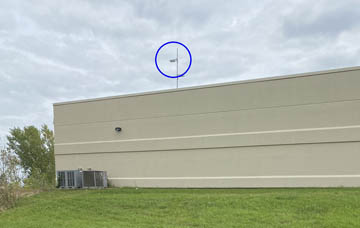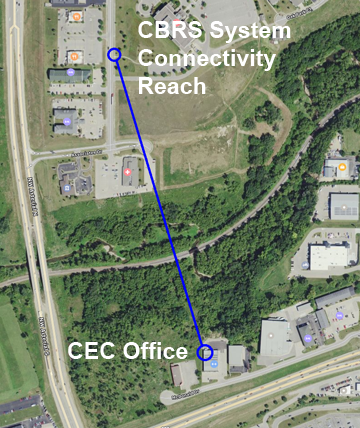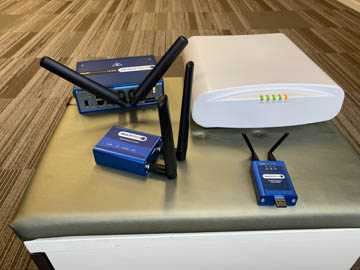Oct. 28, 2020
By Troy McDermott
When innovative technologies first hit the market, it’s exciting for you – and for us. But before we start recommending, designing, and installing new technology for customers, CEC likes to get to know it a little bit better.
Our company was built on wireless communication (we started out as a small radio repair shop in 1946), so we’ve been paying attention to up-and-coming technology for decades. One innovation we’ve got our eye on right now is the new CBRS (Citizens Broadband Radio Service) wireless standard.
Until recently, CBRS was designated for use by satellite ground stations and the U.S. Navy for ship-to-shore communications. Within the last year, however, the FCC approved the CBRS wireless spectrum for commercial and general use. This will help relieve demand on currently available wireless frequencies by creating more traffic “lanes” for private LTE data networks operating in the 3.5 GHz range (between Wi-Fi frequencies of 2.4 GHz and 5 GHz).
Before we roll it out to you, we wanted to better understand CBRS and the benefits it offers (from enhanced security to better indoor and outdoor coverage). To do this, we’ve been working closely with technology partners Ruckus Wireless and Motorola Solutions.
These experts provide training and education to CEC’s staff, of course, but we like to go a little deeper. We want to invest in and deploy new technology within our own environment to learn as much as we can about potential challenges and true performance advantages.
To put this new technology to the test in our Dubuque office, we set up three LTE access points for CBRS:
- Ruckus Q910, an outdoor LTE access point
- Ruckus Q710, a high-capacity indoor LTE access point
- Ruckus Q410, an indoor LTE access point

With our Dubuque office’s recent move to a bigger location, we had a great opportunity to try CBRS with our 20 workers spread out across 7,000+ square feet of space. Even though the building is large, we’ve achieved complete coverage using a single Q710 indoor access point. We’ve tested every spot we could find – from the warehouse to back offices – and results show very high signal strength everywhere.
Outside, our testing shows excellent coverage results as well. Given a clear path back to the building, we saw strong signals from at least a quarter mile away; some locations as far as 2,100 feet away still had a functional signal.

To add cellular connectivity to existing wired assets, we also deployed client devices from MultiTech:
- The MultiConnect eCell allows a single camera, laptop, or any other IoT device to connect
- The MultiConnect rCell serves as a backhaul for multiple devices simultaneously connected via ethernet and Wi-Fi

So far, our findings have been impressive. We’ll continue to put our CBRS system to the test to see what we can uncover. When we’re confident that CBRS offers advantages that will be beneficial to you, we’ll be ready to help you deploy your own!
Have questions about CBRS or the new system we’re testing? Send me a note!
Troy McDermott has more than 20 years of experience with IT and network systems, designing custom solutions for CEC customers in a variety of vertical markets. He serves as the company’s go-to educational resource for IT-related initiatives. He first joined CEC in 2002 as a network engineer after spending several years in the IT trenches of the K-12 world. Today, Troy serves as an IT Enterprise Architect, educating clients and colleagues about the everchanging world of IT.




